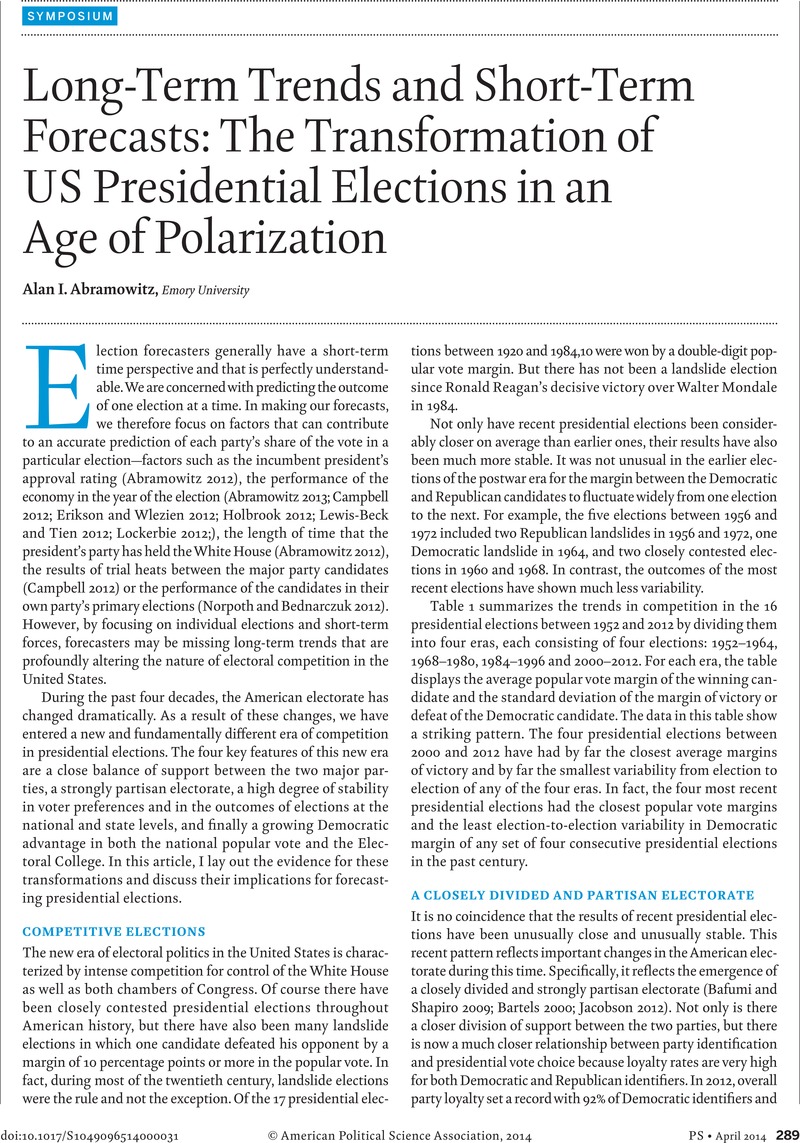Crossref Citations
This article has been cited by the following publications. This list is generated based on data provided by Crossref.
2017.
Red Fighting Blue.
p.
213.
Perry, Luke
2022.
The 2020 Presidential Election.
p.
1.
Obenchain, Kathryn M.
Callahan, Rebecca M.
Ochoa, Claudia
Rico, Julieta
and
DeSantos-Quezada, Angeles
2024.
Empathy & civic engagement: Latiné youth motivating change in an anti-immigrant America.
Latino Studies,
Vol. 22,
Issue. 4,
p.
741.
Embree, Robert
2024.
The unswayed voter: How a polarized electorate responds to economic growth.
Electoral Studies,
Vol. 90,
Issue. ,
p.
102824.



